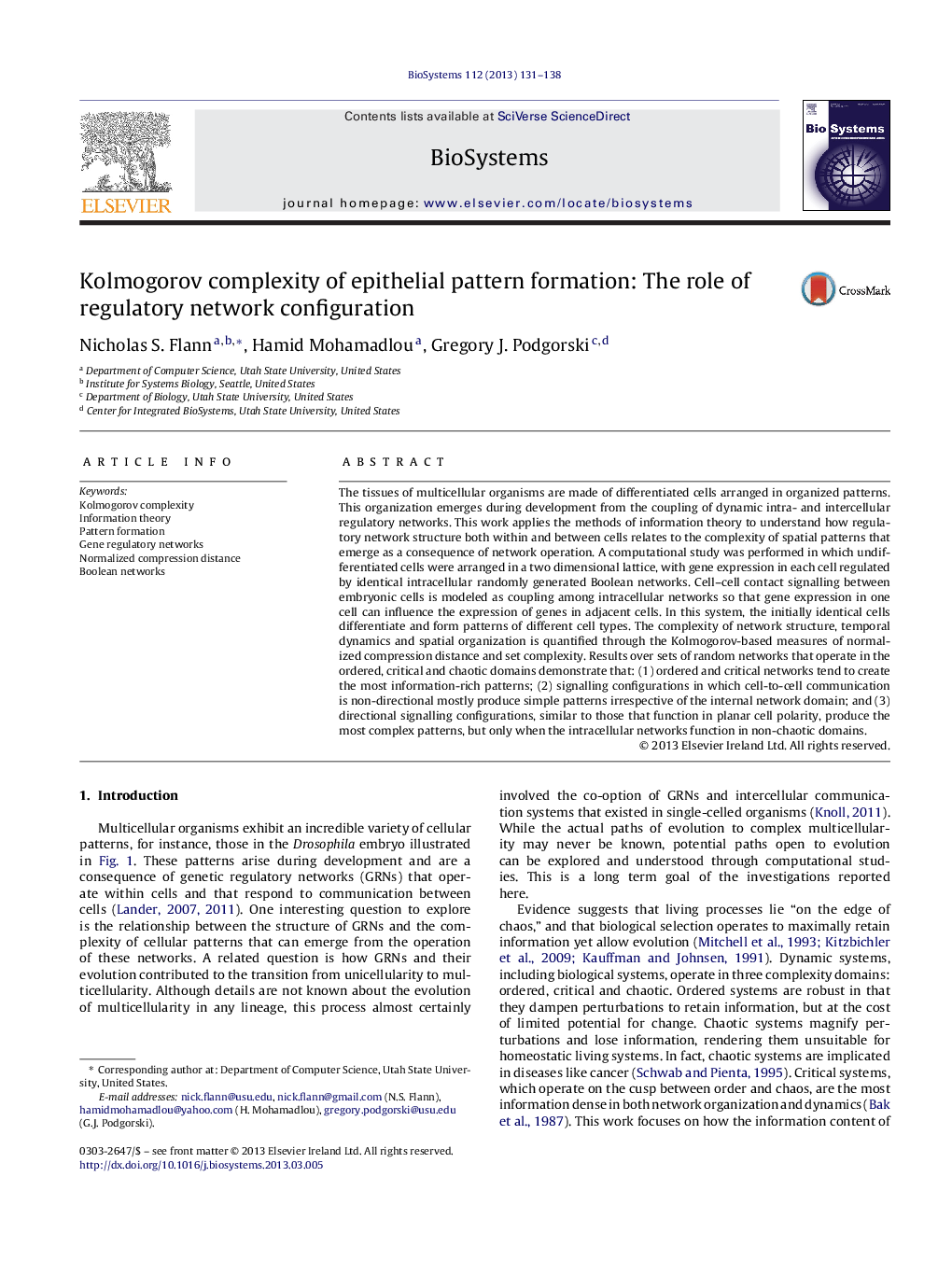| کد مقاله | کد نشریه | سال انتشار | مقاله انگلیسی | نسخه تمام متن |
|---|---|---|---|---|
| 10884577 | 1079407 | 2013 | 8 صفحه PDF | دانلود رایگان |
عنوان انگلیسی مقاله ISI
Kolmogorov complexity of epithelial pattern formation: The role of regulatory network configuration
دانلود مقاله + سفارش ترجمه
دانلود مقاله ISI انگلیسی
رایگان برای ایرانیان
کلمات کلیدی
موضوعات مرتبط
مهندسی و علوم پایه
ریاضیات
مدلسازی و شبیه سازی
پیش نمایش صفحه اول مقاله

چکیده انگلیسی
The tissues of multicellular organisms are made of differentiated cells arranged in organized patterns. This organization emerges during development from the coupling of dynamic intra- and intercellular regulatory networks. This work applies the methods of information theory to understand how regulatory network structure both within and between cells relates to the complexity of spatial patterns that emerge as a consequence of network operation. A computational study was performed in which undifferentiated cells were arranged in a two dimensional lattice, with gene expression in each cell regulated by identical intracellular randomly generated Boolean networks. Cell-cell contact signalling between embryonic cells is modeled as coupling among intracellular networks so that gene expression in one cell can influence the expression of genes in adjacent cells. In this system, the initially identical cells differentiate and form patterns of different cell types. The complexity of network structure, temporal dynamics and spatial organization is quantified through the Kolmogorov-based measures of normalized compression distance and set complexity. Results over sets of random networks that operate in the ordered, critical and chaotic domains demonstrate that: (1) ordered and critical networks tend to create the most information-rich patterns; (2) signalling configurations in which cell-to-cell communication is non-directional mostly produce simple patterns irrespective of the internal network domain; and (3) directional signalling configurations, similar to those that function in planar cell polarity, produce the most complex patterns, but only when the intracellular networks function in non-chaotic domains.
ناشر
Database: Elsevier - ScienceDirect (ساینس دایرکت)
Journal: Biosystems - Volume 112, Issue 2, May 2013, Pages 131-138
Journal: Biosystems - Volume 112, Issue 2, May 2013, Pages 131-138
نویسندگان
Nicholas S. Flann, Hamid Mohamadlou, Gregory J. Podgorski,